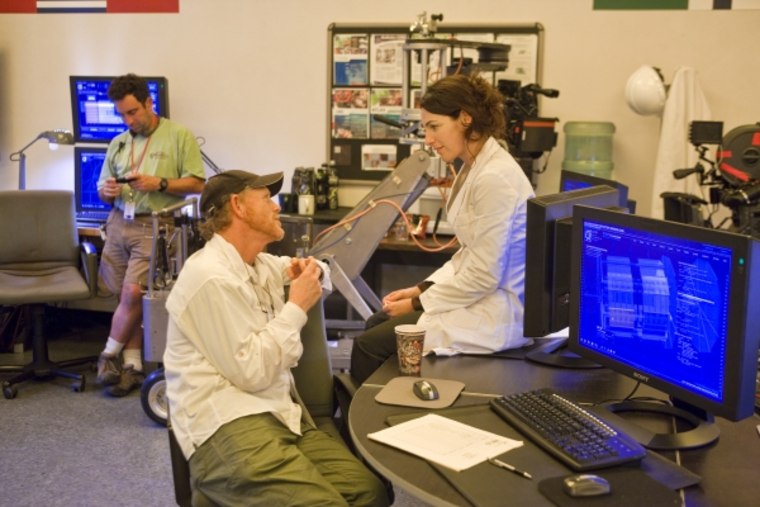The European physics laboratory that reassured us it wouldn’t destroy the earth in a "big bang" experiment last year is now telling people not to fret about antimatter.
Physicists at CERN are keen to separate fact from fiction in Hollywood’s upcoming adaptation of the Dan Brown novel "Angels & Demons," in which a secret society tries to annihilate the Vatican with antimatter stolen from the lab on the Swiss-French border.
CERN spokesman James Gillies said that while director Ron Howard "tried to get the science as right as is possible in the film," some aspects of the fictional plot are unavoidably fantastical.
"The basic problem is the concept of antimatter," he said. "You cannot make that much."
In a statement coinciding with a visit of "Angels & Demons" stars Tom Hanks and Ayelet Zurer, CERN said its production of low-energy antiprotons could help solve the mystery of why matter has triumphed over antimatter, and also lead to lifesaving technology such as cancer treatment.
"As Dan Brown correctly points out, when matter and antimatter meet, they annihilate, leaving only energy behind," CERN said. "One of the great mysteries of the universe today is how enough matter has survived to provide the building blocks for stars, planets, and even us."
Matter and antimatter are believed to have been created in equal amounts in the big bang that cosmologists say started up the universe 13.7 billion years ago, though today antiparticles are extremely rare.
What CERN does with antimatter
For years, scientists at CERN have been conducting experiments aimed at building up atoms of antimatter from artificially produced antiparticles. One of the experiments at CERN's Large Hadron Collider, known as LHCb, aims to analyze the differences between particles of ordinary matter and their antimatter mirror images to address the mystery of the matter-antimatter imbalance.
Antiparticles have several medical uses: The best-known application is positron emission tomography, or PET scans, which rely on anti-electrons (also known as positrons). CERN added that "preliminary experiments carried out at CERN have shown that antimatter particle beams could be very effective at destroying cancer cells."
In the book "Angels & Demons" — which Brown wrote before his better-known "Da Vinci Code" — the Large Hadron Collider produces enough antimatter for a bomb, and the theft of that antimatter sets the plot in motion. The ability to create that much antimatter is the most far-fetched of Brown's fictional embellishments; he also gave CERN employees a space plane and a wind-tunnel playground, neither of which actually exist.
Director awed by science
Most of the "Angels & Demons" movie was shot in Rome, but the opening sequence includes images inside the LHC, which Gillies described as “more visually spectacular” than CERN's Antiproton Decelerator complex. The filming took place last year, before the LHC's 17-mile (27-kilometer) tunnel was sealed in preparation for its startup last September.
"Angels & Demons" is due to be released in May. Howard, who directed the "Da Vinci Code" movie as well as the upcoming thriller, said he was awed by work under way at CERN.
"The scientists here have been incredibly helpful in explaining the science to us, and giving us access to some incredible places. I think what they’re doing here is fantastic," he said in a statement.
The LHC is currently shut down for repairs, due to cooling system problems that cropped up shortly after its startup. CERN now expects proton beams to resume circulating through the collider ring in late September of this year.
Last year, CERN addressed public concerns that the collider could create an Earth-swallowing black holes or other catastrophic phenomena. A federal lawsuit seeking a suspension of work on the facility, based on such concerns, was dismissed shortly after the startup. The case is now being considered by an appeals court.
This report includes information from Reuters and msnbc.com.
